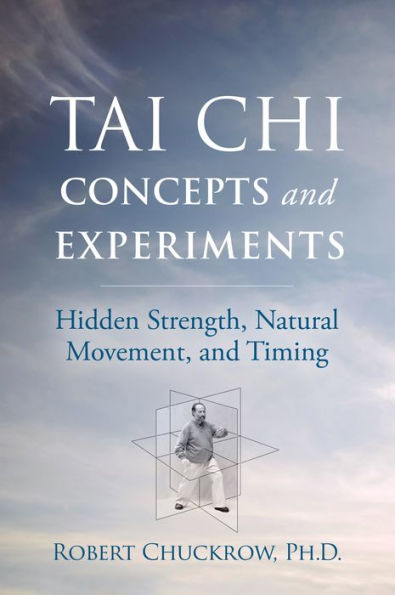AWARDS
RUNNER UP—2022, Mind Body Spirit, Next Generation Indie Book Awards
WINNER—2021, Sports, Best Books Award
"Robert Chuckrow has demonstrated a determination and commitment to understanding the depth of martial arts practice. He establishes a recognition and appreciation for those that have shared knowledge with him, and the willingness to share and contribute his understanding to others. The wisdom of martial arts is sometimes difficult to uncover. Often, it is only appreciated and awakened through overcoming adversity and ‘paying your dues.’ I hope that, as Robert Chuckrow, Ph.D. shares his experience through this book, as well as his teaching, it will inspire current practitioners and future generations, and provide insight to recognize and discern where to find clarity along their path. Robert Chuckrow sets an example of how to grow your personal practice through contributing to the greater martial arts community. I wish you all a wonderful journey while exploring this book and success in your study of martial arts!”
— Grandmaster Sam F.S. Chin, Honorary Professor Emeritus, Founder of Zhong Xin Dao, Gatekeeper of I Liq Chuan, Author of I Liq Chuan – Martial Art of Awareness and I Liq Chuan System Guide and many DVDs
"It’s my great pleasure to recommend his latest book on Tai Chi by my friend and Tai Chi classmate. Dr. Chuckrow is a Tai Chi devotee who keeps on studying and learning. As a Western scientist he delves deeply into the esoteric jargon, principles and teachings of Tai Chi and reinterprets these for Westerners.”
— Lawrence Galante, PhD, author of Tai Chi for the Supreme Ultimate, director of The Center for Holistic Arts NYC, Professor SUNY University, NYC
"Robert Chuckrow offers his enlightening wisdom and educated perspective on the paradoxes of T’ai Chi in his latest work. [This book] resolves so many nagging questions that all beginners have and offers many new tools for instructors to share this venerated art. It’s a must-read work for T’ai Chi practitioners of every level,”
— Gene Ching, 32nd generation disciple of Shaolin Temple, author of Shaolin Trips, publisher of Kung Fu Magazine
"Reading Professor Chuckrow’s book proves that efficient movement is efficient movement, no matter if it’s done in Tai Chi or Kodokan Judo. One comment that Professor Chuckrow made was “…wasteful movement is unnatural.” This, in a nutshell, also describes what we do in judo. Another nugget of practical wisdom is “…moving efficiently, using the smallest possible movements provide and advantage.” One would think that this came out of a judo book. Again, proving that efficient movement is efficient movement, no matter the context. It is a distinct pleasure and an honor to offer my endorsement for Professor Robert Chuckrow’s book."
— Steve Scott, Author of The Judo Advantage, Juji Gatame Encyclopedia, and Sambo Encyclopedia among others
"What a generous gift to share with the world! It breathes a lifetime of passionate dedication and desire to comprehend beyond borders, until the very last page. May many, many people find their way to reading this book, and take these findings in ongoing formation to new, wonderful understandings for next generations.”
— Thomas Körtvélyessy, choreographer, MFA, certified master teacher of Kinetic Awareness®, board of directors Kinetic Awareness® Center, executor Artistic Estate of Elaine Summers
"I was immediately impressed with Robert Chuckrow’s approach to the soft style arts. In the beginning of the book, Dr. Chuckrow’s discussion of expansive strength versus contractive strength was immediately useful to me in my daily practice. Every chapter that followed presented new insights and ideas that I had not considered before, as well as exercises and experiments that helped me experience them directly. A valuable addition to any martial arts library.”
— Joe Varady, author of The Art and Science of Staff Fighting and The Art and Science of Stick Fighting
"Robert Chuckrow is a teacher and a scientist who comprehends and synthesizes what he learns. He then shares it for the benefit of others. He couples his knowledge of physics with his T’ai-Chi skills, and the result enables the reader to understand this art more clearly. People learn T’ai Chi for different reasons, some do T’ai Chi for years without understanding much of what they do, they will miss the wondrous benefits that a deeper study will offer. This book will take you further along this path. “
— Ken Van Sickle, Tai Chi Master in the lineage of Cheng Man-ch'ing, Professor Emeritus (cinematography) N.Y.U. 1980s



